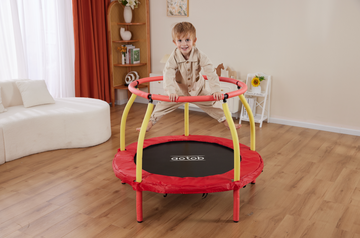Both in-ground and above-ground trampolines have their own safety considerations, and whether one is safer than the other depends on various factors. Here are some considerations for each type:
In-ground Trampolines:
Lower Fall Height: In-ground trampolines are level with the ground, which means that the fall height is minimal if someone falls off the trampoline. This can reduce the risk of injury from falling.
Aesthetics: In-ground trampolines can be more aesthetically pleasing as they blend into the landscape and are less obtrusive compared to above-ground trampolines.
Easier Access: They may be easier for younger children and individuals with mobility issues to access since there are no steps or ladders to climb.
Ground Preparation: Installing an in-ground trampoline typically requires excavation and proper ground leveling, which can be a costly and time-consuming process.
Drainage: Proper drainage is essential to prevent water accumulation in the pit, which can lead to mold and other safety issues.
Above-ground Trampolines:
Easier Installation: Above-ground trampolines are generally easier to set up and require less effort in terms of excavation and ground preparation.Maintenance: They are often easier to maintain and clean since they are above the ground and more accessible.
Visibility: Above-ground trampolines are easier to supervise, making it easier for parents and caregivers to monitor users for safety.
Lower Cost: Above-ground trampolines are usually less expensive to purchase and install than in-ground trampolines.
Safety Net Options: Many above-ground trampolines come with safety enclosures, which can help prevent users from falling off.
Ultimately, the safety of a trampoline depends on proper use, maintenance, and supervision. Both types of trampolines can be safe when used correctly and with appropriate safety measures in place. It's crucial to follow safety guidelines, such as using safety nets, padding, and adult supervision when needed, regardless of whether you choose an in-ground or above-ground trampoline. Additionally, regularly inspecting the trampoline for wear and tear and ensuring proper maintenance can help mitigate potential safety risks.







